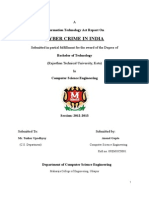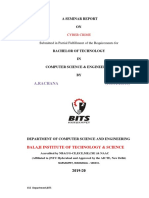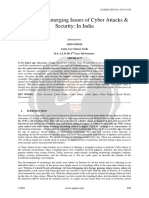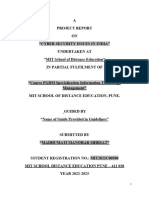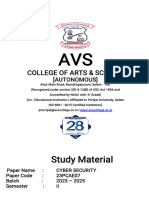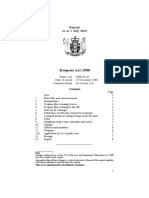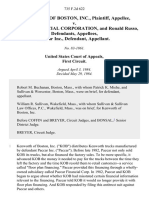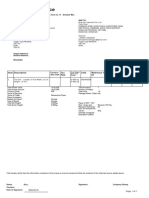0% found this document useful (0 votes)
26 views7 pagesQuestion Bank and Assignments
The document is a comprehensive question bank for the Cyber Security course (BCC401) covering various topics such as cybercrime, information security, mobile security, computer forensics, and intellectual property issues. It includes questions for both end-semester exams and assignments, focusing on definitions, analyses, evaluations, and proposals related to cybersecurity concepts and practices. The questions are categorized by course outcomes (COs) and aim to assess students' understanding and critical thinking in the field of cybersecurity.
Uploaded by
yashikachauhan9999Copyright
© © All Rights Reserved
We take content rights seriously. If you suspect this is your content, claim it here.
Available Formats
Download as PDF, TXT or read online on Scribd
0% found this document useful (0 votes)
26 views7 pagesQuestion Bank and Assignments
The document is a comprehensive question bank for the Cyber Security course (BCC401) covering various topics such as cybercrime, information security, mobile security, computer forensics, and intellectual property issues. It includes questions for both end-semester exams and assignments, focusing on definitions, analyses, evaluations, and proposals related to cybersecurity concepts and practices. The questions are categorized by course outcomes (COs) and aim to assess students' understanding and critical thinking in the field of cybersecurity.
Uploaded by
yashikachauhan9999Copyright
© © All Rights Reserved
We take content rights seriously. If you suspect this is your content, claim it here.
Available Formats
Download as PDF, TXT or read online on Scribd
/ 7




